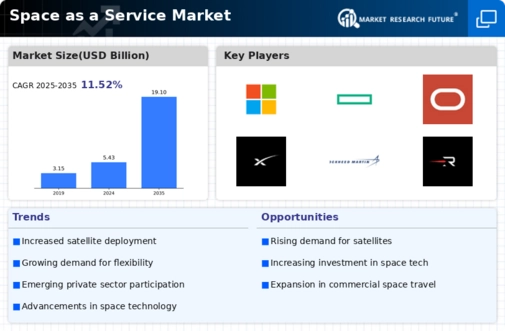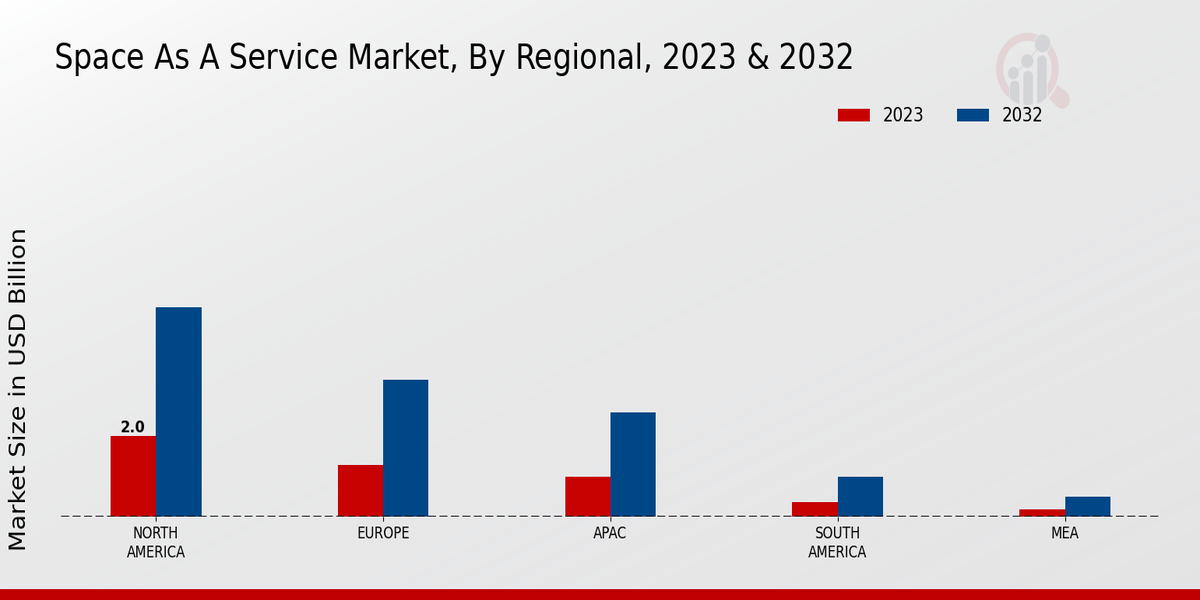Market Growth Charts
Emergence of New Business Models
The emergence of new business models within the Global Space as a Service Market Industry is reshaping traditional paradigms. Companies are increasingly adopting subscription-based models, pay-per-use services, and partnerships that enhance flexibility and accessibility for customers. This shift allows organizations to leverage space capabilities without the burden of significant upfront investments. As a result, a diverse range of industries, from agriculture to healthcare, can access satellite data and services tailored to their specific needs. This trend not only democratizes access to space but also stimulates market growth, aligning with the overall upward trajectory projected for the coming years.
Advancements in Launch Technologies
Advancements in launch technologies significantly influence the Global Space as a Service Market Industry, as innovations reduce costs and increase accessibility to space. The emergence of reusable rocket systems and small satellite launch vehicles has democratized access to space, enabling a broader range of entities, including startups and research institutions, to participate in space activities. This trend not only lowers entry barriers but also fosters a competitive environment that drives innovation. As the industry evolves, the potential for increased launch frequency and reduced costs may catalyze further growth, aligning with the projected CAGR of 12.1% for the period from 2025 to 2035.
Growing Demand for Satellite Services
The Global Space as a Service Market Industry experiences a notable surge in demand for satellite services, driven by the increasing need for data communication, Earth observation, and remote sensing. As of 2024, the market is valued at approximately 5.43 USD Billion, reflecting a growing reliance on satellite technology across various sectors, including agriculture, defense, and telecommunications. This trend is expected to continue, with projections indicating a market expansion to 19.1 USD Billion by 2035. The integration of satellite services into everyday applications suggests a robust growth trajectory, potentially enhancing operational efficiencies and decision-making processes across industries.
Growing Interest in Space Exploration
The Global Space as a Service Market Industry is witnessing a growing interest in space exploration, driven by both governmental and commercial entities. The increasing number of missions aimed at lunar and Martian exploration reflects a broader ambition to expand human presence beyond Earth. This interest is supported by international collaborations and partnerships, which enhance resource sharing and knowledge transfer. As exploration initiatives gain momentum, the demand for related services, such as satellite communications and data analytics, is likely to rise. This trend may contribute to the overall growth of the market, aligning with the anticipated expansion to 19.1 USD Billion by 2035.
Increased Investment in Space Infrastructure
The Global Space as a Service Market Industry benefits from increased investment in space infrastructure, as both public and private sectors recognize the strategic importance of space capabilities. Governments worldwide are allocating substantial budgets to develop and enhance spaceports, satellite networks, and ground support systems. This investment is crucial for sustaining the growth of the industry, as it enables the development of advanced technologies and services. The collaborative efforts between governments and private companies are likely to create a more robust ecosystem, facilitating innovation and expanding service offerings. Such developments may further contribute to the anticipated growth trajectory of the market.























